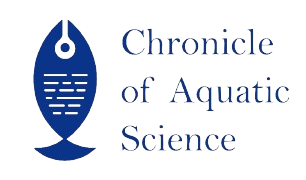| File | Action |
|---|---|
| Global Strategies for Prevention of Malnutrition in India | Download |
- 919088951040 call us
- chronicleofaquaticscience@gmail.com Mail us
Global Strategies for Prevention of Malnutrition in India
Popular Article
Manuscript ID: CoAS_V2IS2_03
Global Strategies for Prevention of Malnutrition in India
Shilpa Ghosh*, Niladri Choudhury and Nayanika Chattopadhyay
Abstract
Any excess, imbalance, or deficit in a person's energy and nutrient consumption is called malnutrition. It may be the result of either an excessive or insufficient calorie intake. Undernourished children are a major public health issue in India. India has one of the highest rates of underweight children worldwide, about twice as high as Sub-Saharan Africa, which is indicative of this. With one-third of the world's malnourished children living in India, the country has one of the highest rates of child malnutrition. The National Family Health Survey 5 (NFHS 5) conducted by the Government of India reveals that 36% of children under five have stunted growth, 19% are wasted, 32% are underweight, and 3% are overweight. Biotechnology has produced food crops with increased nutritional value within 20 years. The world's impoverished have a lot to gain economically and health-wise from biofortified sorghum, cassava, maize, rice, and other staple crops enhanced with vital micronutrients. This article examines the reasons behind under-five child malnutrition in India in this regard. It analyzes the global approaches with the help of upcoming biotechnological processes to prevent or cure malnutrition in India.
Keywords
Malnutrition, Diseases, Biotechnological strategies for prevention.
References
- Aijaz, R. (2017). Preventing hunger and malnutrition in India. Observer Research foundation Report, 182, 2-12.
- 2. Banerjee, S., Roy, P., Nandi, S., & Roy, S. (2023). Advanced biotechnological strategies towards the development of crops with enhanced micronutrient content. Plant Growth Regulation, 1-17. https://doi.org/10.1007/s10725-023-00968-
- 3. Hefferon, K. (2019). Biotechnological approaches for generating zinc-enriched crops to combat malnutrition. Nutrients, 11(2), 253. https://doi.org/10.3390/nu11020253
- 4. Hefferon, K. L. (2015). Nutritionally enhanced food crops; progress and perspectives. International journal of molecular sciences, 16(2), 3895-3914. https://doi.org/10.3390/ijms16023895
- 5. Kishore, G. M., & Shewmaker, C. (1999). Biotechnology: Enhancing human nutrition in developing and developed worlds. Proceedings of the National Academy of Sciences, 96(11), 5968-5972. https://doi.org/10.1073/pnas.96.11.5968
- 6. Latham, M. C. (1984). Strategies for the control of malnutrition and the influence of the nutritional sciences. Food and Nutrition, 10(1), 5-31.
- 7. Mohseni, M., & Aryankhesal, A. (2020). Developing a model for prevention of malnutrition among children under 5 years old. BMC Health Services Research, 20, 1-9. https://doi.org/10.1186/s12913-020-05567-x
- 8. Tekle Abegaz, S. (2021). We are IntechOpen, the world’s leading publisher of Open Access books Built by scientists, for scientists.
- 9. Vemireddy, L. R. (2014). Food and nutrition security: Biotechnology intervention. Springer Science Reviews, 2(1-2), 35-49. https://doi.org/10.1007/s40362-014-0018-y
- 10. World Health Organization. (2022). Mid-term review of the Strategic Action Plan to reduce the double burden of malnutrition in the WHO South-East Asia Region 2016–2025.
- Published online
- 30th July, 2024
How to Cite the Article
Ghosh S, Choudhury N and Chattopadhyay N. Global Strategies for Prevention of Malnutrition in Indi. Chron Aquat Sci. 2024; 2(2): 12-16
Copyright
This is an open-access article distributed under the terms of the Creative Commons Attribution License (CC BY). The use, distribution or reproduction in other forums is permitted, provided the original author(s) and the copyright owner(s) are credited and that the original publication in this journal is cited, in accordance with accepted academic practice. No use, distribution or reproduction is permitted which does not comply with these terms.

Global Strategies for Prevention of Malnutrition in India


